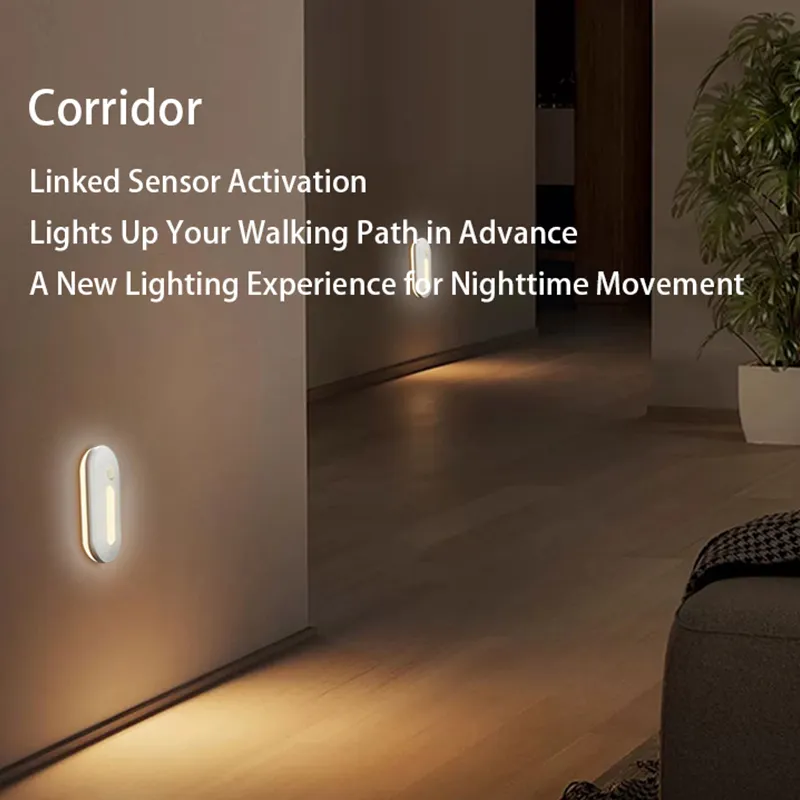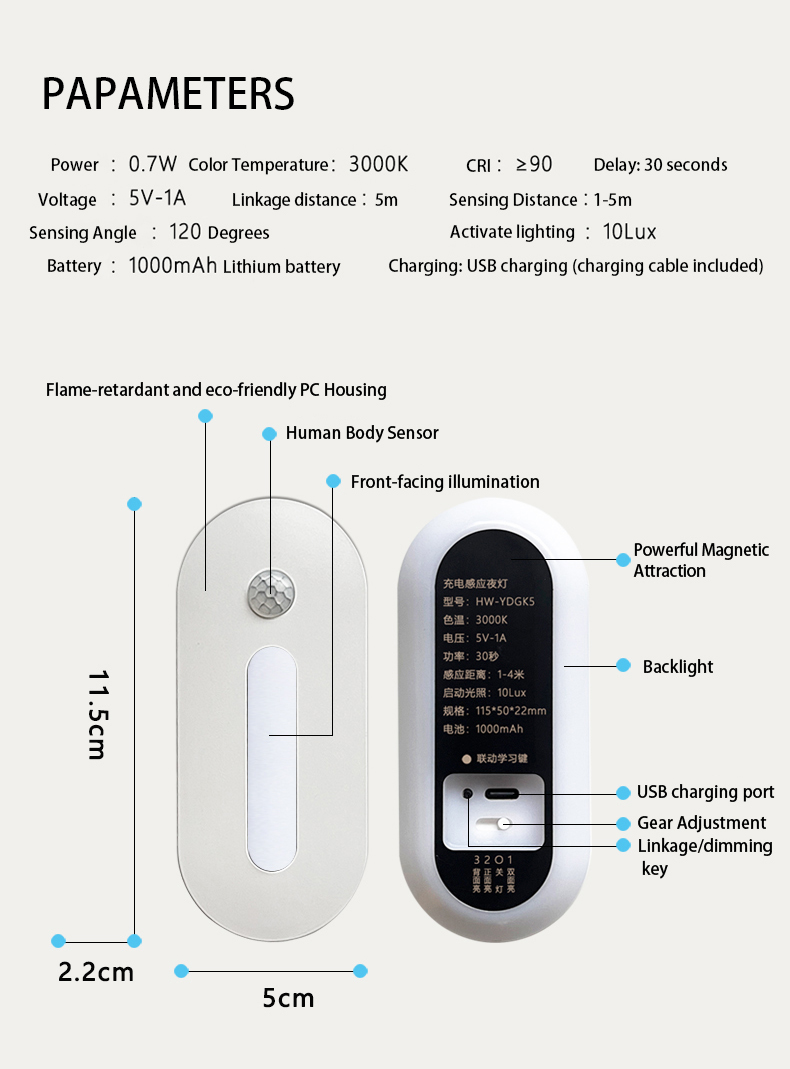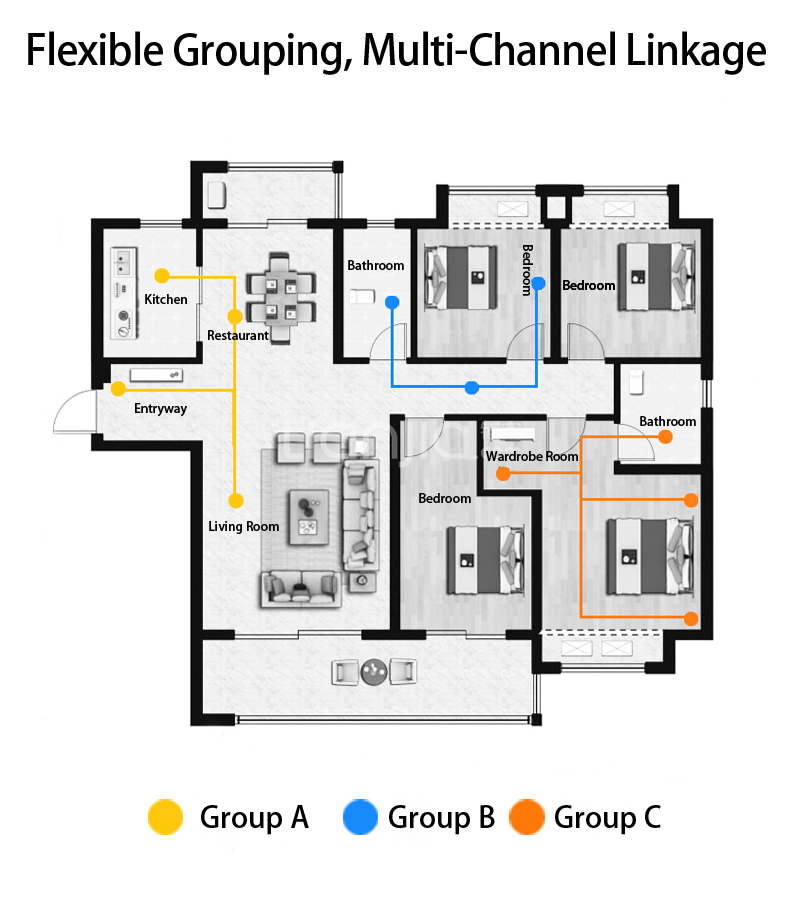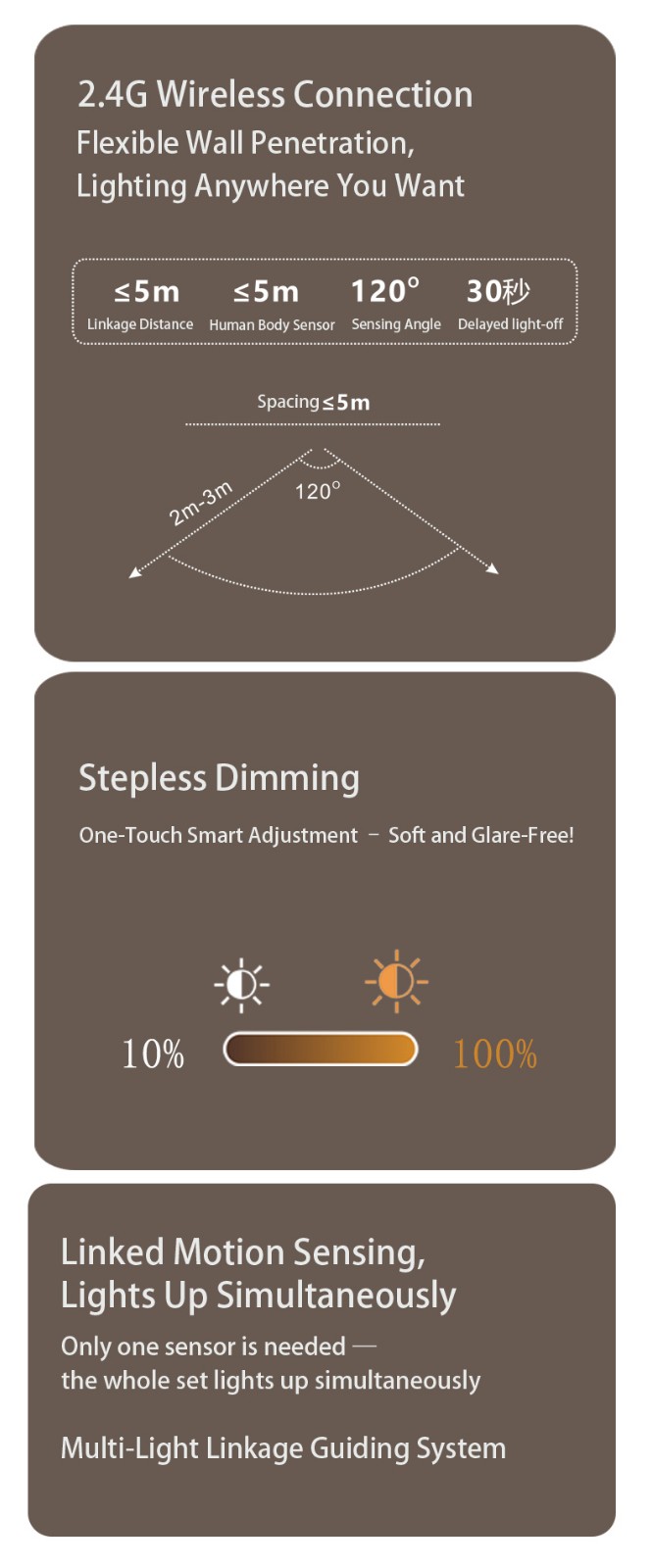Does an LED motion sensor nightlight consume power when turned off?
With the widespread adoption of smart lighting products, LED motion sensor nightlights have become an indispensable part of many homes.
Whether in hallways, stairwells, bathrooms, or children's rooms and bedroom corners, these nightlights, which automatically sense human movement and switch on and off, greatly enhance the convenience and safety of living.
However, many users often have a question—does an LED motion sensor nightlight consume power when turned off?
This question seems simple, but it actually involves knowledge of multiple aspects, including LED circuit design, infrared sensing technology, and standby power consumption. This article will answer this question in detail from a professional perspective and help you understand the working principle and energy consumption mechanism of LED motion sensor nightlights more scientifically.

What is the basic working principle of an LED motion sensor nightlight?
Generally speaking, this type of nightlight mainly consists of the following parts:
1. LED light source
LED is short for Light Emitting Diode. It is known for its high energy efficiency, low heat, and long lifespan, and is the mainstream light source for modern lighting.
2. Motion Sensing Module (PIR Infrared Sensor)
This module detects changes in infrared thermal radiation in the surrounding environment. When a person or animal approaches, the sensor detects the temperature change and triggers the circuit to turn on the LED light.
3. Control Circuit and Power Supply Module
This is the "brain" of the nightlight, responsible for determining whether the light should be on, whether it should be off, and the delay time, among other logical controls. Power supply can be a battery, USB charging, or direct plug.
4. Photosensitive Sensor (available in some models)
It detects ambient brightness, ensuring the light only turns on automatically in low light conditions, thus avoiding accidental triggering and wasting energy during the day.
When the environment darkens and someone is detected passing by, the LED light automatically turns on; after a set time when no one passes by, the light automatically turns off. This process is fully automatic and requires no manual intervention.

When the LED motion sensor nightlight is "off," does it really consume no power at all?
This is the core question and a source of confusion for many users.
From the outside, when the light is off, the nightlight appears to be completely "off"; however, the internal sensor module is actually still working. This is because, in order to constantly detect new motion signals, the motion sensor must be in standby mode, maintaining a small current supply.
This energy consumption in standby mode is called "static power consumption" or "standby power consumption."
Therefore, the answer is—LED motion sensor nightlights still consume power when off, but the power consumption is extremely small.

Why do LED motion sensor nightlights still need power when off?
To understand this, we need to understand the working logic of the motion sensor.
1. The PIR infrared sensor needs continuous detection
This sensor determines whether someone has passed by by detecting changes in infrared radiation. Without a continuous power supply, the sensor cannot "sense" changes in its surroundings and therefore cannot trigger the light to turn on.
Therefore, even when the LED light is partially off, the sensor module still needs to continue working.
2. The control chip maintains logical judgment
Smart nightlights typically have a built-in microcontroller unit (MCU) or simple logic circuitry to determine the triggering conditions. If the circuit is completely powered off, the logical judgment will not be able to execute.
3. The photosensitive module also requires a weak power supply
If the nightlight has a photosensitive detection function, it will remain in a "suppressed triggering" state during the day, and only allow the light to illuminate at night. This function also requires a continuous power supply to function.
Therefore, even in the "off" state, the entire nightlight system is actually in a low-power operation mode, not completely powered off.
How much standby power does an LED motion sensor nightlight actually consume?
The standby power consumption of LED motion sensor nightlights varies slightly between different brands and models, but it is generally very low.
Typically:
• Battery-powered nightlights have a standby power consumption of approximately 10–30 microamps (μA);
• Plug-in nightlights have a standby power consumption of approximately 0.1–0.3 watts (W).
Let's do the math: Even assuming a standby power consumption of 0.2 watts, running 24 hours a day, it would only consume about 1.75 kWh per year, equivalent to less than 1 RMB in electricity costs.
This energy consumption is almost negligible.
Therefore, from an energy-saving perspective, the power consumption of the LED motion sensor night light when off is extremely small, insufficient to burden daily electricity usage.

Will this standby power consumption affect its lifespan?
Many users worry that since the LED motion sensor night light still consumes power when off, will it shorten the product's lifespan? The answer is no.
The current in standby mode is very small, usually within the rated current range of the sensor and control chip, and has almost no impact on the lifespan of components. In fact, the lifespan of an LED light mainly depends on the following factors:
1. The quality and heat dissipation performance of the LED chip
High-quality LED chips can have a lifespan of over 50,000 hours under good heat dissipation conditions.
2. The stability of the power supply circuit design
Voltage fluctuations or overloads are the main causes of early LED failure.
3. Operating Environment
Excessive humidity or temperature can affect the performance of electronic components.
Therefore, from both a theoretical and practical perspective, standby power consumption will not significantly affect the lifespan of the LED motion sensor night light.
What is the difference between the "off state" and "power-off state" of an LED motion sensor night light?
These are two concepts that many users easily confuse.
1. Off Mode
This refers to the light being off, but the internal sensors and control circuitry are still running. This is the normal standby mode for an automatic sensor light.
2. Power Off State
This refers to physically disconnecting the power supply (e.g., unplugging or removing the battery), at which point the night light completely stops working.
Only in the power-off state will the LED motion sensor night light truly achieve "zero power consumption."
However, this means that it needs to re-enter standby mode every time it is powered on, losing the convenience of automatic sensing.
Therefore, unless it is not used for a long time, frequent power-offs are unnecessary.
Why is the energy efficiency of the LED motion sensor night light still better than that of ordinary night lights?
Despite a small amount of standby power consumption, LED motion sensor nightlights are still more energy-efficient than traditional nightlights. Here's why:
1. High Efficiency of LED Light Sources
Compared to incandescent or energy-saving bulbs, LEDs have several times higher luminous efficacy and consume only 10%–20% of the power of traditional light sources.
2. Automatic Sensing Reduces Inactive Lighting Time
Ordinary nightlights need to be constantly lit, while motion-sensor nightlights only illuminate when activity is detected, significantly reducing usage time.
3. Photosensitive Control Further Saves Energy
In well-lit days, the light will not be triggered, avoiding waste.
Therefore, from an overall energy consumption perspective, LED motion sensor nightlights remain one of the most energy-efficient and intelligent home nighttime lighting solutions.
How to Determine if an LED Motion Sensor Nightlight Has Excellent Standby Power Consumption?
When purchasing or using one, you can consider the following:
1. Check Product Specifications
Reputable brands usually specify standby power consumption data in the instruction manual. For example, "standby power < 0.25W" or "quiescent current < 30μA".
2. Focus on power supply design
Battery-powered models are generally better optimized to extend battery life; plug-in models prioritize stability.
3. Choose products with smart chips
Nightlights using low-power MCU designs can intelligently switch between sleep and active modes, further reducing energy consumption.
4. Check user reviews
User feedback is an effective way to understand actual standby performance.
In short, low-power standby is one of the important indicators of the quality of LED motion sensor nightlights.

Does unplugging an LED motion sensor nightlight save more power?
Indeed, if you are away for a long time or do not plan to use the nightlight, unplugging it can completely cut off the power, thus saving a tiny amount of standby power. However, in daily life, this saving is almost negligible.
Keep in mind that the annual standby power consumption of a nightlight is far less than one percent of the standby power consumption of a home Wi-Fi router or TV.
Therefore, to maintain the convenience of automatic nighttime lighting, it is usually unnecessary to unplug the power.
Is the standby power consumption of LED motion sensor nightlights safe?
Many people worry that even with low power consumption, there might be safety risks from prolonged standby. In fact, as long as the product quality is up to standard, there is absolutely no need to worry.
1. Low-voltage safety design
Most LED motion sensor nightlights operate at only 5V or 12V, far below the safe voltage standard.
2. Built-in overcurrent and overvoltage protection
High-quality nightlights have multiple safety protection mechanisms to prevent overheating caused by abnormal current or voltage.
3. Compliance with certification standards
Reputable products typically pass CE, CCC, FCC, and other certifications, ensuring safety and reliability.
Therefore, while standby power consumption exists, it does not pose a safety hazard.
How to minimize the energy consumption of LED motion sensor nightlights?
If you still wish to further reduce energy consumption, you can refer to the following methods:
1. Choose products with high-efficiency chips
Prioritize purchasing LED nightlights labeled "ultra-low power consumption" or "energy-saving mode".
2. Strategic Installation Location
Avoid frequent accidental triggering. For example, avoid installing in areas with high airflow or frequent pet activity.
3. Adjust Sensing Range and Delay
Some products allow manual setting of the sensing distance or delay time. Shortening the on-time reduces energy consumption.
4. Use Photosensitive Control
Enable the nightlight to operate only in low-light conditions, preventing accidental activation during the day.
These methods effectively optimize the overall energy efficiency of LED motion sensor nightlights.
What export markets does Huari Lighting currently serve?
Our export network spans Europe, North America, Southeast Asia, the Middle East, and Latin America. Over the past decades, Huari has built strong cooperation with importers, wholesalers, and retail chains in these regions. All our lighting products are manufactured to meet the certification requirements of each destination.
Whether you are sourcing for the EU, the US, or Asia-Pacific, Huari Lighting is your trusted Chinese manufacturer for high-quality LED products at competitive prices.
